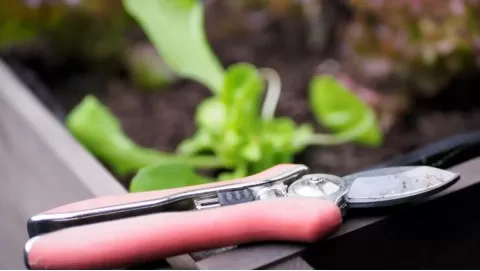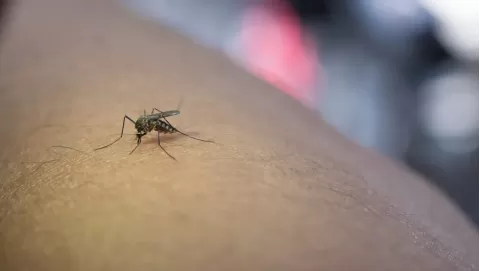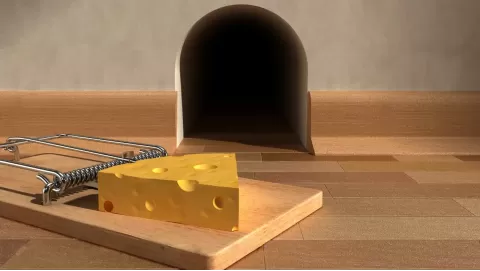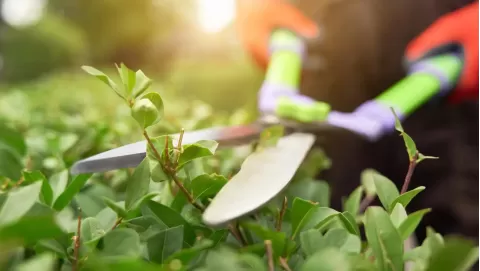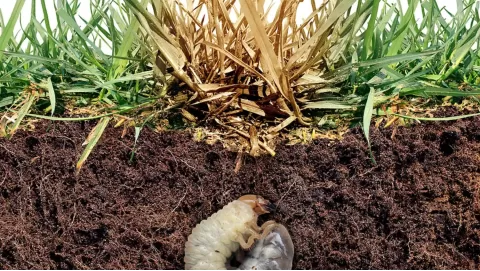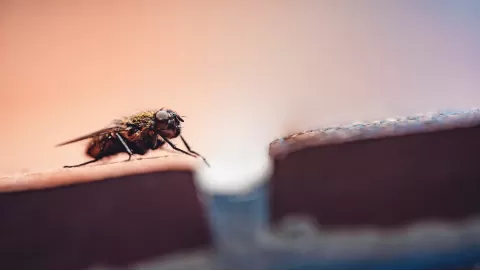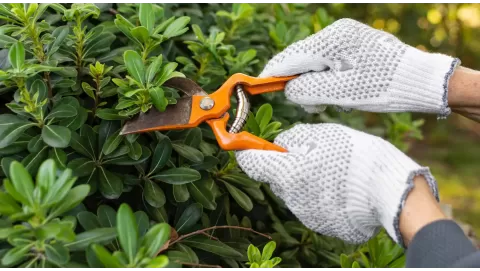
Complete guide to rat pest control: Keep rodents out for good
Rats are capable of doing significant damage to homes, buildings, and farms. Through their droppings, urine, and bites, they spread dangerous diseases such as leptospirosis and salmonella. Rats also chew on wires, wood and pipes, which can result in fires or expensive repairs. They frequently get into food and ruin storage areas and cause big financial losses for homeowners and businesses.
Rat pest control is necessary for health, safety, and peace of mind. It prevents people from getting sick, buildings from being damaged and food and living areas from being fouled. Good pest control also minimizes stress due to noise, bad odors and constant cleanup.
Rat Biology and Behavior
For rat control for home and garden, people need to know how rats live and behave. There are two general kinds of rats that make their way into buildings and homes. Each type lives in different areas, so it is helpful to know which species one is dealing with.
- Norway rats (brown rats): These rats are large rats with short noses and small ears. They generally reside in basements, sewers or even burrows under the ground.
- Roof rats (black rats): These rats are thin with long tails and large ears. They favor high locations like ceilings, attics, or roofs.
Rats come out mostly at night. They are in search of food such as grains, fruits, meat or garbage. They tend to hop back to the same place to eat. Rats will make a nest out of soft material such as paper, cloth, or insulation. They tend to nest near food and water.
Rats travel the same routes each day. They hug walls or fences, and can climb pipes or wires. They can also wriggle through really tiny holes. Learning how they travel is useful for people looking for good locations for traps and for blocking the places where rats come into buildings.
Identifying Infestation Signs
Rats tend to hide during daylight hours and try to avoid being seen. But they leave traces proving they are close by.
- Droppings: Rat droppings are one of the easiest signs to notice. All of them are small, dark little things no bigger than a grain of rice. People usually spot them near food, in drawers, up the walls or under the sink.
- Gnaw marks: Rats have to gnaw to keep their teeth short. They chew on wood, wire, plastic and even furniture. Chewed wires can also pose a fire hazard.
- Strange noises: People might hear scratching, squeaking and scurrying, especially at night. These sounds usually emanate from walls, ceilings and under the floor.
- Nests and shredded material: Rats nest in hidden places. They line the nest with crumpled paper, fabric, or soft bedding. One can find a nest, or chewed up items that are a good indication of rats being around.
- Grease marks and footprints: Rats will travel the same route over and over, and grease smudges on walls and baseboards can offer valuable evidence of this. In dusty regions, locals may also see small footprints or tail prints.
- Unusual pet behavior: Dogs or cats might act excited or scared in particular places if there’s a close rat invasion. Pets often can smell or hear rats even when people cannot.
Preventive Measures (Exclusion and Sanitation)
The best way to deal with rats, though, is to not let them in in the first place. Cutting off their access points and maintaining a clean house can help make an area less appealing for rats.
Sealing Entry Points
A coin-sized hole is all they need to squeeze through. It’s essential to seal any holes or gaps around your home, especially around:
- Doors and windows
- Vents and pipes
- Foundations and walls
Rat-proofing Materials
Rats can chew through anything that is not made with the right materials. The stronger and harder to chew through, the better. These include:
- Steel wool can be stuffed into holes and gaps.
- It is a wire mesh that is used to cover vents or other large openings.
- Caulk, or sealer to seal small chinks or edges.
Sanitation Practices
Neat environments make it more difficult for rats to scavenge for food and shelter. Good habits include:
- Proper storage of food such as sealing jars for food, snacks, and pet food.
- Ensure that waste is covered by tightly-sealing lids on trash cans at all times.
- Sweeping up crumbs and spills in kitchens and dining areas.
Reduce Clutter and Hiding Spots
Rats prefer dark, untidy places where they can hide and nest. To prevent this:
- Clear up piles of paper, boxes or clothing.
- Regularly clean out storage rooms, garages, and basements.
- Maintain neat and orderly outdoor areas by keeping grass and bushes cut.
Control Methods: Baits
Rodenticide baits (rat poison safe for pets) are a popular and effective method for rat control for home and garden. Home remedies, if used properly they may help to reduce heavy infestations. But it’s critical to keep them out of the way so that pets and kids don’t accidentally get exposed and they don’t harm the environment.
Types of Rodenticides
There are several kinds of rodenticides, all working a little differently:
- Anticoagulants (first- and second-generation): These poisons make the rat’s insides bleed, which kills them. The first-generation anticoagulants take longer to act and the second-generation anticoagulants are stronger and act faster.
- Single-feed toxins: These toxins (bromethalin, cholecalciferol) are highly toxic. Rats need to eat only a small amount to be susceptible, and they typically die rapidly. But if not used cautiously, these poisons can be even too harmful to pets or wildlife.
Bait Station Selection and Placement
Use tamper-resistant bait stations to protect baits from children, pets and non-target animals. These stations are constructed so that only rats can enter and access the bait, making everything else safe.
- Position bait stations at or near where rats travel, in out-of-the-way places, such as along walls, by gnawed openings, between floors, and corners.
- Position stations close to rat runs and known entry points to maximize the chances they will eat the bait.
Safety and Legal Considerations
Rodenticides are dangerous products, so be sure to put baits in locations where kids and pets can’t reach them. Always adhere to the manufacturer’s safety instructions printed on the product labels.
There are laws in various regions about how and where rodenticides may be used. Before using any poison, read the local regulations to be sure everyone is in compliance with all safety rules and regulations.
Recommended Bait:
BASF Selontra Rodent Bait 8 lb Pail is a great option for controlling signs of rat infestation. This bait contains a single-feed cholecalciferol, and rats will eat it and die, leaving the humans clueless as to how they died. It has been formulated to be very palatable to rats so that they readily consume it. Its palatable formulation reduces the possibility of secondary poisoning to other animals. The bait is best when placed in tamper resistant bait stations along rat runways and close to rat nests.
Control Methods: Traps
Traps are one of the fastest ways to catch rats. Traps can prove effective without the use of toxic chemicals, which is helpful for homes with pets or small children. Here are the various types of traps and how one can use them.
1. Snap Traps
Snap traps are cheap, and they work quickly. They kill rats fast, which can lessen the infestation immediately.
- Set traps where rats roam, like along walls or near food.
- Bait traps with rat-friendly foods, including peanut butter, cheese and dried fruit.
- For best results, bait lightly to prevent overloading the trap.
2. Electronic Traps
Electronic traps administer a high-voltage shock immediately to kill the rat. They’re simple to use and give a fast kill that’s less stressful on the animal.
- These traps are clean and efficient and can be used a number of times. They also work on the humane level of destruction and killing the rats instantly.
- Electrical traps cost more than snap traps. And they require batteries, which steadily need replacing.
Electronic rat traps are easy to clean and can be reused indefinitely, making them a cost-effective option for rat control for home and garden. But it’s vital to adhere to the manufacturer’s cleaning guidelines to prevent a hygiene problem.
3. Live-catch Traps
Live-catch traps don’t kill rats, but capture them. It’s widely considered to be less cruel up front, but may not be legal everywhere with concerns that rats will be released in the wild.
- If the homeowner frees the rat, they should do so at least 100–200 yards from the home to avoid any return.
- Before releasing a trapped rat, check local laws to make sure there won't be any legal trouble.
Recommended Trap:
The GONZO Rodent Pro Multi-Max Rat Trap provides the perfect resource for eliminating rats. This trap has a patented vertical trigger bar for the perfect placement of the trigger that results in a quick, humane kill. Constructed of tough, durable plastic, it can be reused time and time again, and the powerful spring mechanism ensures a rapid, humane kill. The GONZO trap can be used indoors or outdoors and can be placed in any room or setting.
Control Methods: Repellents
Repellents are a good way to keep rats out of certain areas without killing them. These techniques can be employed along with trapping or baiting or in situations where people want non-lethal control.
Natural Repellents
Rats can’t stand the scent of peppermint and eucalyptus oils. People can use these oils by wetting cotton balls with the oil and leaving them in places where rats have been active. It's rat-killing gas, and the smell will drive them out and make the place unpleasant for them.
Some plants, such as marigolds and garlic, are believed to be rat repellents. Hanging these plants in the house or in the garden may help deter rats naturally.
Ultrasonic and Electronic Devices
Ultrasonic devices produce high frequency sounds, which can be disturbing for the rats. These can cover greater areas, but may not serve well in all cases, such as in thick walled or heavily furnished areas. How well they work can vary, and rats can become accustomed to the noise.
To get the most out of your ultrasonic devices, install them where rats are likely to be active along walls, close to food sources, or in attics and basements. Check to see that the sound is not being obstructed.
Professional Grade Repellents
Predator urine, like fox or bobcat urine, can trick rats into thinking a predator is nearby. Pouches or sprays of predator urine can be placed along entry points or nesting sites to repel rats.
These items should be placed in areas that rats frequency appear. They are scented with odors that are particularly unpleasant to rats and are a common way to reduce the entry of rats into or around buildings.
Recommended Repellent:
Victor® Scent Away Natural Rodent Repeller is a natural product that people can place anywhere inside or outside home to help keep mice, rats and other rodents away. In each set, peppermint flavored granules are inside a porous mesh sack. Rats dislike the strong smell of peppermint and will stay away from any area treated with this oil.
These packs are the best rat trap for attics, crawl spaces, basements, behind appliances, and in kitchens or garages. The peppermint aroma is effective for up to 30 days to keep unwelcome critters at bay without spreading harmful chemicals. This one is safe for use in homes with kids and pets, as natural products are used in its production.
Monitoring and Maintenance
Once rats are eliminated, regular monitoring is key to making sure they don’t come back. Continuing checks and the proper implements can also help keep the home rat-free for the long haul.
Routine Inspections
It’s good practice to go over traps and bait stations once a week to ensure they’re functional, replenish baits, and empty the catches. Regular inspections will keep the issue in check.
In the fall, rats may come in out of the cold. People should check their homes more closely at this time to thwart nesting and seal off fresh entrance points.
Long-term Monitoring Tools
Growcycle has digital sensors that monitor rat activity and relay the information through an app. These smart devices help to stay ahead of any indications of infestation.
Keeping a logbook or checklist will ensure regular inspections and treatments are not forgotten. It means nothing gets missed and patterns that need addressing can easily be spotted by people.
FAQs
What is the most effective pest control for rats?
The best rat exterminator options use a combination of methods to solve the problem. Rodenticides can be baited to get rid of heavy infestations, and traps serve as an effective control measure. Sealing entry points and maintaining the cleanliness of the building are essential for long-term prevention. Natural repellents such as peppermint oil are available alongside ultrasonic devices that help dissuade rats from returning.
How to get rid of rats permanently?
To prevent rodents from getting inside, the most effective measure is to exclude them. Seal any openings that could serve as entrances for the bats, such as holes in the doors, windows, vents, and pipes. Block these holes with steel wool or hardware cloth, two materials that are less likely to be chewed through if people have repeat visitors. Keep the surroundings clean by keeping food in sealed containers, taking out the trash and getting rid of clutter that allows rodents to hide.
How do I know where to place rat traps?
The ideal spots to put rat traps are along walls, in corners, and where there are signs of rats. Rats typically stick to the same paths and they tend to follow the same paths, so putting the traps along the pathways raises their chance of a kill. Some of the favorite spots for rats are places near trash cans, food storage areas and even hidden angles in your house.
The Bottom Line
Rat pest control is necessary to protect homes, businesses, and farms. Rat poison safe for pets, traps, and repellents are control methods that can minimize infestation. Once people have get rid of the rats, check the area occasionally to make sure they don’t come back.
Visit Growcycle to purchase such tools as digital sensors that can detect rat activity and send notifications to the phone, allowing people to monitor for signs of infestation.
Disclaimer: This material is for informational purposes only and should not be relied on for legal, medical, financial, or any other form of professional advice.







